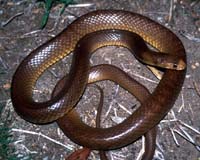| . |  |
. |
Rockville MD (SPX) Jun 10, 2010 Scientists have developed the first cell controlled by a synthetic genome. They now hope to use this method to probe the basic machinery of life and to engineer bacteria specially designed to solve environmental or energy problems. The study will be published online by the journal Science, at the Science Express website, on Thursday, 20 May. Science is published by AAAS, the nonprofit science society. The research team, led by Craig Venter of the J. Craig Venter Institute, has already chemically synthesized a bacterial genome, and it has transplanted the genome of one bacterium to another. Now, the scientists have put both methods together, to create what they call a "synthetic cell," although only its genome is synthetic. "This is the first synthetic cell that's been made, and we call it synthetic because the cell is totally derived from a synthetic chromosome, made with four bottles of chemicals on a chemical synthesizer, starting with information in a computer," said Venter. "This becomes a very powerful tool for trying to design what we want biology to do. We have a wide range of applications [in mind]," he said. For example, the researchers are planning to design algae that can capture carbon dioxide and make new hydrocarbons that could go into refineries. They are also working on ways to speed up vaccine production. Making new chemicals or food ingredients and cleaning up water are other possible benefits, according to Venter. In the Science study, the researchers synthesized the genome of the bacterium M. mycoides and added DNA sequences that "watermark" the genome to distinguish it from a natural one. Because current machines can only assemble relatively short strings of DNA letters at a time, the researchers inserted the shorter sequences into yeast, whose DNA-repair enzymes linked the strings together. They then transferred the medium-sized strings into E. coli and back into yeast. After three rounds of assembly, the researchers had produced a genome over a million base pairs long. The scientists then transplanted the synthetic M. mycoides genome into another type of bacteria, Mycoplasm capricolum. The new genome "booted up" the recipient cells. Although fourteen genes were deleted or disrupted in the transplant bacteria, they still looked like normal M. mycoides bacteria and produced only M. mycoides proteins, the authors report. "This is an important step we think, both scientifically and philosophically. It's certainly changed my views of the definitions of life and how life works," Venter said. Acknowledging the ethical discussion about synthetic biology research, Venter explained that his team asked for a bioethical review in the late 1990s and has participated in variety of discussions on the topic. "I think this is the first incidence in science where the extensive bioethical review took place before the experiments were done. It's part of an ongoing process that we've been driving, trying to make sure that the science proceeds in an ethical fashion, that we're being thoughtful about what we do and looking forward to the implications to the future," he said. This research was funded by Synthetic Genomics, Inc. Three of the authors and the J. Craig Venter Institute hold Synthetic Genomics, Inc. stock. The J. Craig Venter Institute has filed patent applications on some of the techniques described in this paper.
Share This Article With Planet Earth
Related Links Virginia Tech Darwin Today At TerraDaily.com
 Snakes may be in decline worldwide: study
Snakes may be in decline worldwide: studyParis (AFP) June 9, 2010 Distinct populations of snake species on three continents have crashed over the last decade, raising fears that the reptiles may be in global decline, according to a study published Wednesday. The pattern across the eight species monitored was alarmingly similar despite their geographical isolation, which points to a common cause such as climate change, the researchers said. Other factor ... read more |
|
| The content herein, unless otherwise known to be public domain, are Copyright 1995-2010 - SpaceDaily. AFP and UPI Wire Stories are copyright Agence France-Presse and United Press International. ESA Portal Reports are copyright European Space Agency. All NASA sourced material is public domain. Additional copyrights may apply in whole or part to other bona fide parties. Advertising does not imply endorsement,agreement or approval of any opinions, statements or information provided by SpaceDaily on any Web page published or hosted by SpaceDaily. Privacy Statement |